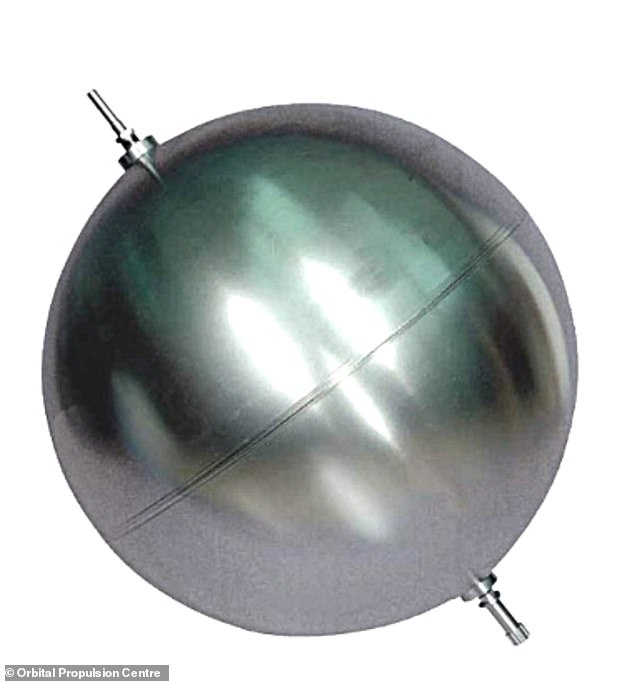Aussie who found mysterious metal ball washed up on far north Queensland beach makes stunning claim about where it came from
A man who discovered a mysterious metal ball on a beach has made a stunning claim that it is not from this world.
Phil Morris discovered the unidentified ball several weeks ago while using a metal detector on a beach in far north Queensland.
The large ball was found on the sand at the water’s edge, with only minor discoloration and weathering.
Mr Morris has since become obsessed with finding the origin of the strange object and claims it is part of an unmanned rocket.
He said that after searching through “thousands” of images online in his spare time, he discovered that a very similarly identified object had also been found in Namibia a decade earlier.
A man who found a mysterious metal ball (pictured) on a beach in far north Queensland claims it came from space and resembles a similar object that fell in Namibia
After seeing the image of the Namibian ball, “Mr Morris knew it was identical.”
He believes it is a hydrazine bladder tank, used to store rocket fuel aboard an unmanned aircraft during satellite launches, which detach and crash back to Earth.
“I knew from looking at it that the metal had been extremely hot at some point,” Morris West said Yahoo.
“I think it’s more than likely that this heavy metal ball crashed into the ocean before eventually washing up.”
He said in his 40 years of searching beaches with and without a metal detector, this is by far his most “unique” find.
“I thought I had found just about everything I could find to wash ashore,” he said.

Phil Morris claims the object he found was ‘identical’ to a ball found in Namibia, which was revealed to be a ‘hydrazine bladder tank’ (pictured) used to store fuel for unmanned rockets
Although it has not yet been officially identified as a propellant bladder, it would not be the first space-bound object to wash up on Australian shores this year.
A mysterious metal cylinder measuring two meters high and wide washed up near Green Head on the west coast of Western Australia in July.
Authorities had to warn beachgoers to stay away from the cylinder as its origin was unknown for days.
However, the Australian Space Agency had “determined that the object is most likely a solid rocket motor housing.”
The missile casing had fallen from an Indian LVM3-M4 rocket, which is designed to carry communications satellites into geostationary orbit.
